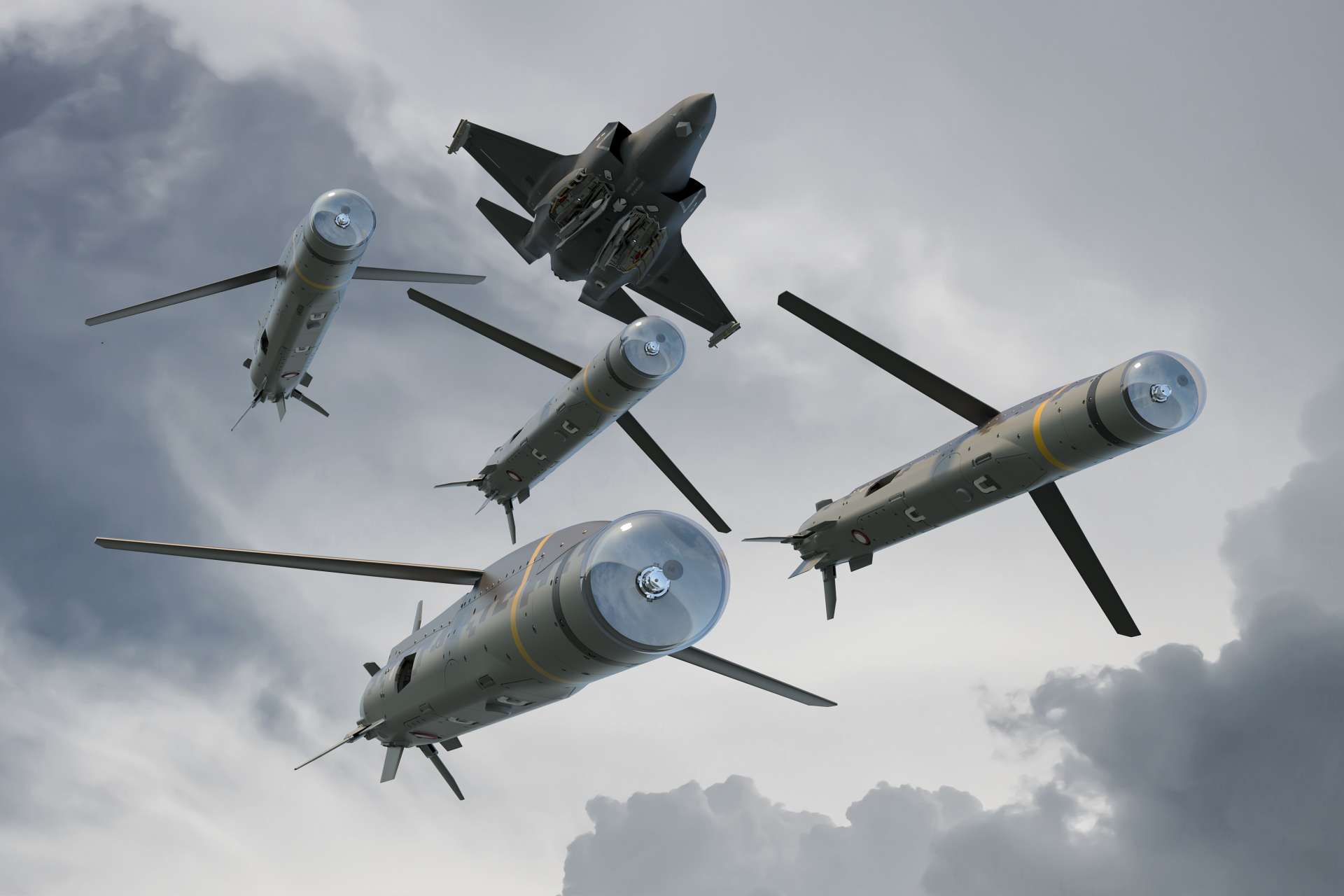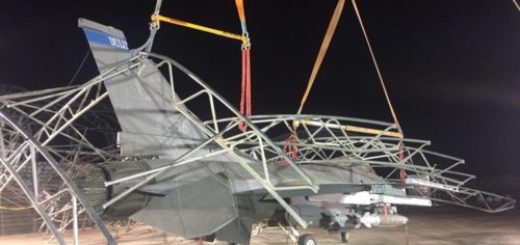U.K. Eyes StormBreaker Precision Bomb for F-35s to Bridge SPEAR 3 Standoff Missile Integration Delay

{loadposition bannertop}
{loadposition sidebarpub}
On 11 July 2025, the United Kingdom’s Ministry of Defence signalled a new step to strengthen its F-35B Lightning Joint Strike Fighter fleet by requesting funding for the RTX GBU-53/B Small Diameter Bomb II, now known as StormBreaker, as reported by the National Audit Office (NAO). This move comes amid persistent delays to the integration of the MBDA SPEAR 3 precision-guided missile, creating an operational gap in long-range standoff strike capability. With its carrier-based F-35B force central to Britain’s Carrier Strike ambitions until at least 2069, the adoption of StormBreaker aims to secure interim firepower in contested environments where survivability and precision matter most. This revelation underscores the UK’s enduring challenges balancing advanced weapons integration and industrial priorities with its sovereign freedom of action.Follow Army Recognition on Google News at this link
As delays to MBDA’s SPEAR 3 continue, the interim adoption of a proven US-made StormBreaker precision bomb could safeguard frontline capability, bolster carrier strike credibility, and ensure British pilots can operate at stand-off ranges vital for survival in contested skies (Picture source: MBDA)
The StormBreaker is a network-enabled, glide bomb designed to engage moving targets in adverse weather. Its compact form factor allows the F-35B to carry multiple munitions internally while retaining stealth characteristics. Originally an American design, the bomb employs a tri-mode seeker, millimetre-wave radar, infrared homing, and semi-active laser guidance, enhancing flexibility across varied target sets. The UK’s interest stems from the StormBreaker’s compatibility with the F-35’s advanced sensors and data fusion, bridging the gap left by the delayed SPEAR 3 and maintaining the aircraft’s multirole edge as envisioned in the original Joint Strike Fighter concept.
Britain’s path to deploying an effective standoff weapon has faced multiple setbacks. The F-35B fleet, operational since 2012, was meant to integrate the UK-specific SPEAR 3 by December 2024 but this has slipped into the early 2030s, according to the NAO. This mirrors historical challenges seen with other UK precision-strike projects where domestic industrial ambitions, evolving requirements, and global programme interdependencies frequently collide. Compared to older systems like Paveway IV, StormBreaker represents a significant leap, offering extended range and precision from safer distances, addressing a vital gap for missions in high-threat airspace that the legacy weapons cannot reliably fulfil.
Equipping the F-35B with StormBreaker would carry important strategic implications. Militarily, it reinforces the UK’s commitment to a credible Carrier Strike Group by ensuring that embarked jets can conduct precision attacks against mobile and defended targets without relying entirely on the yet-to-arrive SPEAR 3. Geostrategically, it signals London’s resolve to maintain interoperability with US and allied forces, many of whom are also integrating StormBreaker into their F-35s. At the same time, it highlights Britain’s dependence on the US-led Joint Program Office for weapon integration, despite the UK’s long-held aspiration for greater sovereign control over its stealth fleet’s mission data, maintenance, and combat loadouts.
Financially, the UK’s F-35 capability has already consumed at least £11 billion to date, with a projected whole-life cost potentially reaching £71 billion by 2069. While StormBreaker integration funding is pending, the MoD’s overall F-35 budget remains under intense scrutiny given the wider delays to essential upgrades like the Block 4 modernisation and the Air Signature Assessment Facility for stealth maintenance. No defence contract for StormBreaker has been awarded yet, but its procurement would be an interim measure until the domestic SPEAR 3 is fielded at full capacity. The last major contract under the F-35 programme remains the phased purchase of the aircraft themselves, with the UK aiming for 138 but only 48 currently under contract.
The UK’s decision to seek StormBreaker bombs for its F-35B fleet illustrates both the promise and the persistent friction points within Britain’s modern air combat power. As delays to the indigenous SPEAR 3 continue, the interim adoption of a proven US-made precision bomb could safeguard frontline capability, bolster carrier strike credibility, and ensure British pilots can operate at stand-off ranges vital for survival in contested skies. But the choice also spotlights the enduring tension between sovereign ambitions and practical reliance on allied technology when timelines slip and threats evolve faster than procurement can keep pace.

{loadposition bannertop}
{loadposition sidebarpub}
On 11 July 2025, the United Kingdom’s Ministry of Defence signalled a new step to strengthen its F-35B Lightning Joint Strike Fighter fleet by requesting funding for the RTX GBU-53/B Small Diameter Bomb II, now known as StormBreaker, as reported by the National Audit Office (NAO). This move comes amid persistent delays to the integration of the MBDA SPEAR 3 precision-guided missile, creating an operational gap in long-range standoff strike capability. With its carrier-based F-35B force central to Britain’s Carrier Strike ambitions until at least 2069, the adoption of StormBreaker aims to secure interim firepower in contested environments where survivability and precision matter most. This revelation underscores the UK’s enduring challenges balancing advanced weapons integration and industrial priorities with its sovereign freedom of action.
As delays to MBDA’s SPEAR 3 continue, the interim adoption of a proven US-made StormBreaker precision bomb could safeguard frontline capability, bolster carrier strike credibility, and ensure British pilots can operate at stand-off ranges vital for survival in contested skies (Picture source: MBDA)
The StormBreaker is a network-enabled, glide bomb designed to engage moving targets in adverse weather. Its compact form factor allows the F-35B to carry multiple munitions internally while retaining stealth characteristics. Originally an American design, the bomb employs a tri-mode seeker, millimetre-wave radar, infrared homing, and semi-active laser guidance, enhancing flexibility across varied target sets. The UK’s interest stems from the StormBreaker’s compatibility with the F-35’s advanced sensors and data fusion, bridging the gap left by the delayed SPEAR 3 and maintaining the aircraft’s multirole edge as envisioned in the original Joint Strike Fighter concept.
Britain’s path to deploying an effective standoff weapon has faced multiple setbacks. The F-35B fleet, operational since 2012, was meant to integrate the UK-specific SPEAR 3 by December 2024 but this has slipped into the early 2030s, according to the NAO. This mirrors historical challenges seen with other UK precision-strike projects where domestic industrial ambitions, evolving requirements, and global programme interdependencies frequently collide. Compared to older systems like Paveway IV, StormBreaker represents a significant leap, offering extended range and precision from safer distances, addressing a vital gap for missions in high-threat airspace that the legacy weapons cannot reliably fulfil.
Equipping the F-35B with StormBreaker would carry important strategic implications. Militarily, it reinforces the UK’s commitment to a credible Carrier Strike Group by ensuring that embarked jets can conduct precision attacks against mobile and defended targets without relying entirely on the yet-to-arrive SPEAR 3. Geostrategically, it signals London’s resolve to maintain interoperability with US and allied forces, many of whom are also integrating StormBreaker into their F-35s. At the same time, it highlights Britain’s dependence on the US-led Joint Program Office for weapon integration, despite the UK’s long-held aspiration for greater sovereign control over its stealth fleet’s mission data, maintenance, and combat loadouts.
Financially, the UK’s F-35 capability has already consumed at least £11 billion to date, with a projected whole-life cost potentially reaching £71 billion by 2069. While StormBreaker integration funding is pending, the MoD’s overall F-35 budget remains under intense scrutiny given the wider delays to essential upgrades like the Block 4 modernisation and the Air Signature Assessment Facility for stealth maintenance. No defence contract for StormBreaker has been awarded yet, but its procurement would be an interim measure until the domestic SPEAR 3 is fielded at full capacity. The last major contract under the F-35 programme remains the phased purchase of the aircraft themselves, with the UK aiming for 138 but only 48 currently under contract.
The UK’s decision to seek StormBreaker bombs for its F-35B fleet illustrates both the promise and the persistent friction points within Britain’s modern air combat power. As delays to the indigenous SPEAR 3 continue, the interim adoption of a proven US-made precision bomb could safeguard frontline capability, bolster carrier strike credibility, and ensure British pilots can operate at stand-off ranges vital for survival in contested skies. But the choice also spotlights the enduring tension between sovereign ambitions and practical reliance on allied technology when timelines slip and threats evolve faster than procurement can keep pace.






